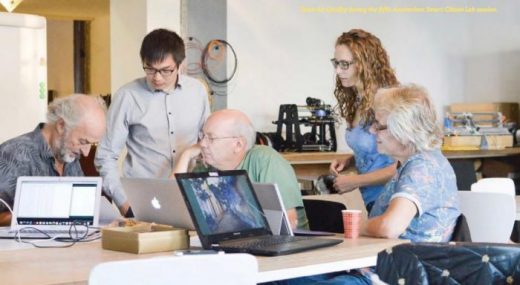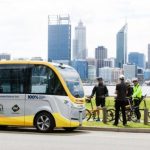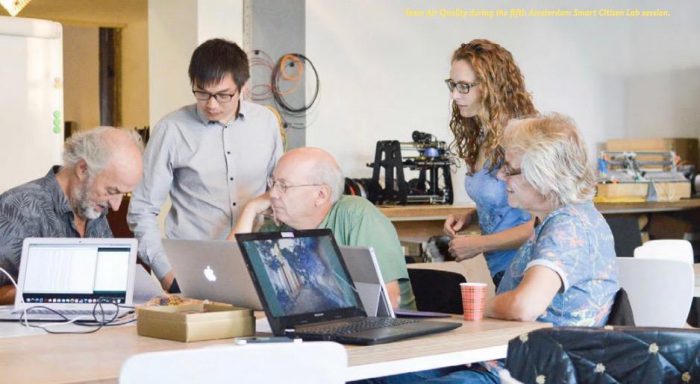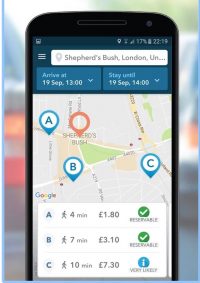6 ideas to consider in smart city development
6 ideas to consider in smart city development

The recent Mobile World Congress in Barcelona revealed that while few brand new and innovative smart city deployments are center stage, it’s an area of technology that is intensely interesting to many and worthy of much consideration.
Here are some of my thoughts based on what was showcased:
Idea #1: Traditional industries should continue to form alliances with start-ups to create innovative solutions to local problems
In 2017, Deutsche Telekom will roll out NB-IoT commercially in eight countries: Germany, the Netherlands, Greece, Poland, Hungary, Austria, Slovakia, and Croatia. They used their NB-IoT prototyping hub, to showcase their work with selected partners and start-ups to develop cutting-edge solutions for Smart Cities. Some of the notable examples showcased included a collaboration with Ayyeka, a California start-up that makes smart water management a reality. It develops end-to-end remote monitoring solutions that streamline and secure the process of bringing field data to decision makers and SCADA systems, enabling smart infrastructure and environmental networks.

Also showcased was a beehive monitoring solution by BeeAndMe which provides technical assistance to beekeepers: A microprocessor unit measures all significant beekeeping parameters. The data collected by the “baby monitor” for bees is also processed via data mining techniques, helping find answers to important scientific questions. Such partnerships and alliances mean that start-ups can bring creative innovation to smart city deployments, a cohort that could easily be otherwise outnumbered in decision making by the big players.
Idea #2: Smart city solutions should be interoperable and multilayered.
We need smart cities and not just a disparate collection of smart city projects. In terms of practicality and streamlining, there’s a need for smart city solutions that solve multiple problems rather than stand-alone devices with single use capacities. This needs to be managed by a primary vendor so that issues such as planning, implementation, and repairs are straightforward to resolve.
See also: Smart city development opportunities target $ 1.3 trillion market
For example, a light pole was showcased by AT&T equipped with sensors that can communicate to public safety and traffic officials about road, parking and pedestrian conditions. Sensors can also be installed to monitor air pollution, weather or the sound of gunshots. The light pole alone has a range of different abilities (with more to come) as well as data that is distributed to multiple service providers. It is important that stewardship for the device is clear and straightforward.
Idea #3: Big telcos are propping up the funding of smart cities

Current, GE’s digital industrial startup business, used MWC to announce a deal with the City of San Diego to upgrade thousands of the city’s outdoor light fixtures to sensor-enabled LED technology, making it the world’s largest smart city IoT platform. AT&T will act as the data carrier and provide highly secure connectivity for the San Diego deployment, which is expected to save the city approximately $ 2.4 million in annual energy costs.
Such deals involve a reasonable amount of costly, upfront infrastructure that, even if it reaps financial benefits in the future, may be out of the financial reach of many local councils and municipalities. As a result, there are many big companies offering time and research at a reduced cost or for free.
A 2016 report into smart city development in the UK that revealed that the task of achieving smarter, more connected cities in the UK lies with local councils a cohort that was in many instances, struggling to deploy funds into smart city research and deployment. This can also mean that smart city efforts that are funded by research grants and university think tanks may never be funded outside of their trial, however effective. Public-private partnerships need to, however, be entered into with an egalitarian approach, to ensure that those without the most funds are not the primary decision makers.
Idea #4: Smart city solutions need to be citizen-centric

In reviewing a range of smart city events over the last year, I found that many were at a cost only accessible to well-funded business people and academics, invitation only or at times suitable for those working in smart city development, making them hardly accessible to the average citizen working 9-to-5. It is important that smart city projects are relevant to the local citizens and local issues.
Different cities have different approaches to citizen engagement. An interesting example is Amsterdam’s utility of citizen science to create interesting opportunities for local engagement. It’s not without its critics in that the city has in the past been criticized for projects where volunteers mostly ended up being nothing more than “citizen sensors” (i.e. tech-enabled corporal data collectors for academic and governmental research. Yet Amsterdam has generated social capital and fostered relationships between scientists, designers and everyday people that would otherwise not occur.
Idea #5: Some smart city solutions are not without controversy
Moscow’s smart city efforts were boosted last year with the implementation of 160,000 outdoor cameras focused on traffic and areas of possible crime. This is part of the Moscow Traffic Control Center, the headquarters of an elaborate monitoring and control system that also includes 40,000 traffic lights and a vast data storage facility that contain all the video data transmitted from the streets. The data has been used to fine citizens for violating road signs and signals with cameras recording license plates on cars.
I spoke to one engineer from a Moscow-based start-up who commented that locals were against the cameras but resigned to paying the fines. As part of a smart city panel discussion at MWC, Andrey Belorezov, deputy CIO for Moscow, elected not to disclose how much revenue has been generated by fines so far. It’s tempting to compare this situation to the UK where there are over 6 million CCTV cameras in public places, ostensibly used to detect and prevent crime. I can’t help wondering how things would change if air quality sensors were as widespread with real-time data to detect and prosecute big business polluters?
But all is not lost, at the other end of the spectrum, with their commitments to open data and open government, the city of Barcelona has implemented a city portal: a digital connection between citizens and local government where citizens can report government corruption, according to Francesca Bria, Chief Technology & Digital Innovation Officer at the City of Barcelona during MWC. It’s an example where smart cities with an underlying citizen first approach can really get things right.
Idea #6: Smart city deployment needs to be financially viable
The inconvenient question is how smart city deployments can be made financially viable to ensure that there is a reasonable parity between neighboring counties and cities, and that smart city development is not limited to a range of pilot tests of projects that never reach their full potential. It’ll be interesting to see what happens in the smart city space over the next decade, and what lessons are learned from the early adopters as the rest struggle to keep up.
The post 6 ideas to consider in smart city development appeared first on ReadWrite.
(61)














